Yin Yoga: 7 Awesome Benefits for Body and Mind
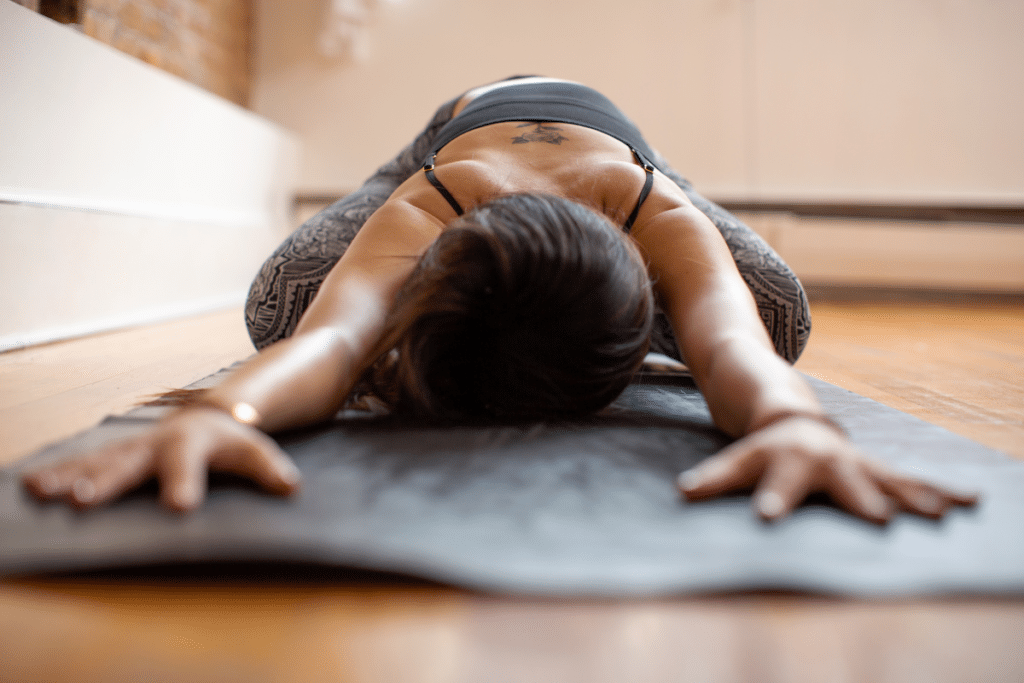
Most forms of yoga target the superficial muscles, create strength, and tone the body. They are usually active and dynamic practices that work the ‘yang’ muscular half of the body.
Yin yoga however is designed to target the deep ‘yin’ inner muscles, ligaments, joints, bones, and connective tissue (known as fascia). There are many benefits of yin yoga, and this article will address seven of the most powerful for body, mind, and emotions.
What is Yin Yoga?
Although the term yin yoga is relatively modern, the style has roots in Daoism and Daoist yoga that was practiced in China and Taiwan thousands of years ago.
The practice consists of a series of passive floor poses that are practiced in a static way, (i.e., there is little to no ‘flow’ element to a yin yoga class). Most of the poses are held for an extended length of time, between three and ten minutes. During a yin yoga class, you do less poses, but you hold them for much longer.
Yin yoga mainly works the lower body, specifically the hips, thighs, glutes, and lower back. Most people have a lot of tension and inflexibility in these areas and find that regular practice of yin yoga helps to release this tightness.
Benefits of Yin Yoga
Yin yoga works on a deep physical and energetic level. Because of this, the benefits of yin yoga are extensive and powerful. I have been teaching yin yoga for many years, and I can say without a doubt, my yin yoga students report far deeper results than I ever experienced when teaching hot yoga, Hatha and vinyasa flow styles.
Because of the excellent results that students experience from yin yoga, I wanted to share my top seven benefits of yin yoga to inspire you to try it for yourself.
1: Flexibility
Yin yoga is well-known for its ability to increase flexibility. The poses are held for three minutes minimum, and sometimes up to ten minutes. This extended period of time allows the muscles, ligaments, fascia, and joints time to gently stretch and lengthen.
Fascia in particular needs a long, steady stretch in order to lengthen, which is why yang yoga styles don’t generally have much of an effect on this important connective tissue. But the fascia is essentially a mesh that envelops the muscles, ligaments, and bones, and so when the fascia is tight, flexibility is reduced.
Using Props
Unfortunately, many yoga students view using props as a weakness; they think that props are only for beginners or the really inflexible. But in yin yoga, we often use props to support the body, and then we work on relaxing into the posture using the breath. Because the joints and bones are supported by the props, the body feels safe and allows the muscles to relax and open, allowing for greater flexibility.
When the body does not feel safe and there is a chance of over-stretch, it will send signals to the muscles to tighten in order to reduce the risk of injury, thus reducing the opportunity to increase flexibility. When we introduce a prop so that the body feels safe and supported, the muscles will open, the fascia and ligaments will lengthen, and greater flexibility can be achieved.
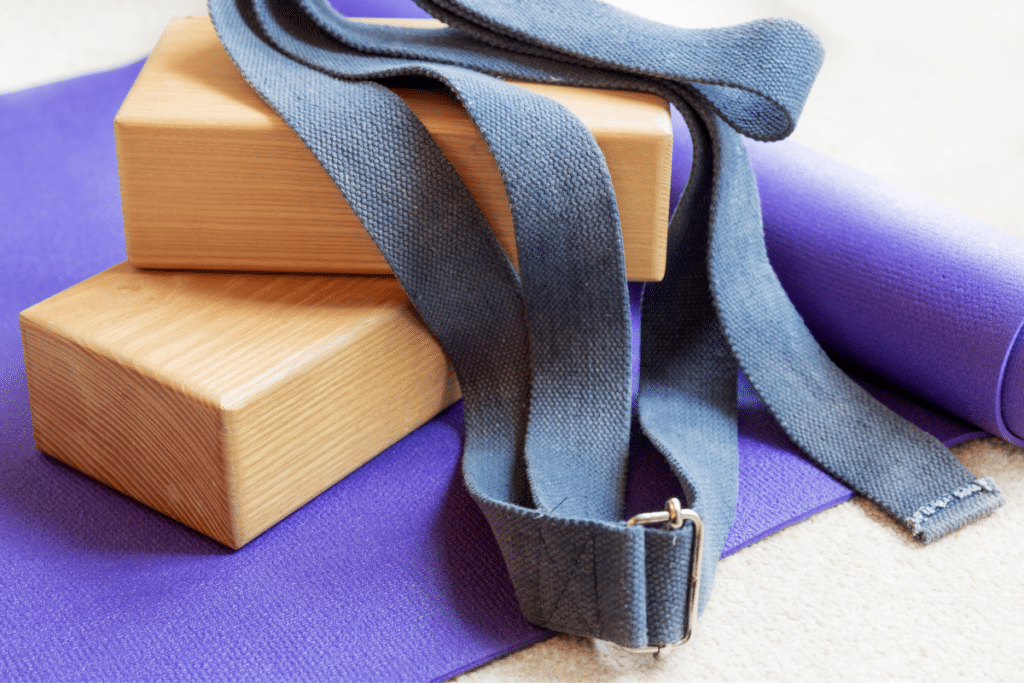
2: Joint Mobility
Yin yoga is a safe way to open the joints to their natural range of motion (ROM), which is different for each of us. Some people have a naturally wide ROM and appear super flexible, while others can practice for years and feel that they aren’t progressing. Sometimes, they have simply reached the natural limit of their ROM for that particular joint, or they have tension in the joint that is preventing them from reaching the extent of their natural ROM.
When the joint loses mobility, it is known as contracture. Contracture can be caused by a sedentary lifestyle (lack of use), nerve damage, injury, illness, and muscular atrophy. Contracture due to a lack of movement and use of the joints due to a sedentary lifestyle can cause fixation in the joints, where two surfaces temporarily stick together.
If the joint is not exercised and stretched to release this fixation, it can lead to fusion of the joints and the permanent inflexibility often seen in older people. Fixation and fusion can be avoided by increasing mobility in the joints. Practicing yin yoga is one of the best ways to mobilize the joints.
Other forms of yoga are not specifically designed to open the joints, whereas yin yoga is designed for this purpose, and is an extremely safe and effective method of joint mobilization.
3: Back Care
We know from architecture that arches are strong shapes that allow for the even distribution of weight to protect the overall integrity of the structure. It is the same principle with the spine. The spine is designed to allow flexibility of motion and absorb the shock of movement. It does this because it is shaped as a double ‘S’ and contains four curves (arches). This shape acts like a spring, absorbing the impact and load of increased pressure from everyday motions such as running, walking, and jumping.
If the spine is not exercised properly then back problems occur due to the reduction of its ability to absorb pressure. The pressure falls more heavily into the discs between the vertebrae, causing them to wear out. Anyone with worn discs will tell you it is not a pleasant experience! The spine must be mobilized regularly to prevent this from happening.
Not only can yin yoga care for your back and prevent pian as you age, it can also help to rectify existing back pain. One of my students had worn discs due to a long-term sedentary lifestyle coupled with being very tall. He had suffered with chronic back pain for years. After a few months of weekly yin yoga classes his back pain had almost disappeared, and he was able to bend and move so much more freely.
4: Energetic Balance
Yin yoga is a powerful energy practice, working on the primary meridian lines in the body to remove blockages and increase energy flow. This vital life force energy is recognized in all ancient spiritual traditions. Indian yogis named it Prana and in Daoist Chinese philosophy it is known as Qi or Chi. If there are blockages in the meridians then the energy cannot flow through the system, which creates dis-ease.
There are 12 main meridian lines in the body, plus 8 minor ones, and many small ones. 12 main meridians there are five yin and five yang, which relate to the organs, plus two more – the Pericardium and the San Jiao.
The yin meridians are the heart, lungs, liver, spleen, and kidneys. The yang meridians are the gallbladder, urinary bladder, small intestine, large intestine, and stomach. The 10 yin and yang meridians form five pairs: kidney and urinary bladder, stomach and spleen, liver and gallbladder, lungs and large intestines, heart and small intestines.
Yin yoga opens the meridian pathways in the body and allows for the proper flow of energy. When the energy flows through the meridians unhindered, the associated organs are nourished, and related physical symptoms reduced.
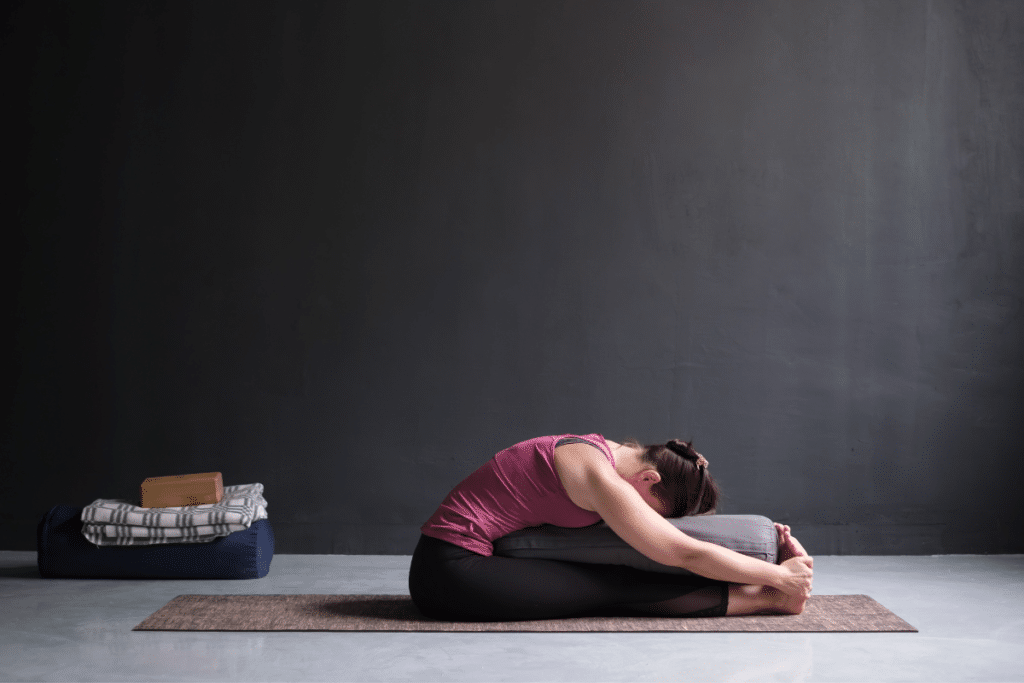
5: Emotional Balance
Each yin-yang pair of meridians is also associated with an element and particular emotions. If you experience unbalanced emotions or a persistent specific emotional state, you may have a blockage or imbalance in a particular meridian pathway.
Here is a list of the meridian pairs and their associated characteristics:
Kidney and Urinary Bladder:
- Element: Water
- Emotions: Fear and wisdom
- Symptoms of imbalance or blockage: Inability to let go, fear of others, distrust, suspicion, poor judgment.
Stomach and Spleen
- Element: Earth
- Emotions: Worry and pensiveness
- Symptoms of imbalance or blockage: Anxiety, nervousness, worry about the future, fatigue, inability to concentrate.
Liver and Gallbladder
- Element: Wood
- Emotions: Anger and kindness
- Symptoms of imbalance or blockage: defensiveness, inappropriately aggressive reactions, inability to handle stress, frustration, irritability, impulsiveness, being a victim.
Lungs and Large Intestine
- Element: Metal
- Emotions: Grief and anxiety
- Symptoms of imbalance or blockage: Low sense of self-worth, need for outside approval, low self-confidence, shallow breathing, digestive issues.
Heart and Small Intestine
- Element: Fire
- Emotions: Joy and love
- Symptoms of imbalance or blockage: Poor decisions, brain fog and lack of mental clarity, sadness, depression, despair, feeling unloved, inability to give love.
To balance emotions, you can practice yin yoga poses that work on the corresponding meridian pathway to help the Qi to flow more freely.
It is also interesting to note that unresolved emotional trauma is stored in the body, primarily in the hip joints. Because yin yoga works deep into the hips, this stuck trauma can be released and felt as a sudden, intense emotion.
I have taught classes where students have spontaneously started crying or felt intense sadness or grief during deep hip stretches. It is perfectly normal and will subside when the emotion passes through and releases.
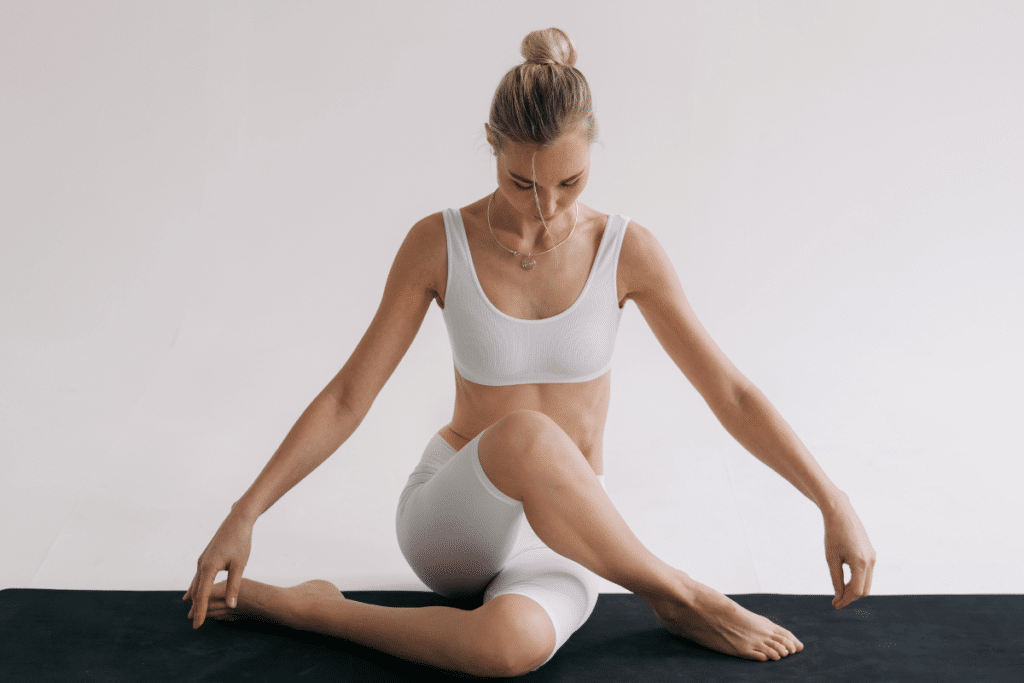
6: Mindfulness
During a yin yoga class, you will be guided by the teacher to focus on your breath and the sensations in your body. Because the poses in yin yoga are held for longer, there is ample time to concentrate on the breath and body and cultivate a deeper state of mindfulness, which creates a stronger sense of self-awareness.
You get to know your body, its limitations and its progress, your emotional landscape becomes clearer and more understandable. With this self-knowledge comes greater self-acceptance and compassion.
In the long holds of yin yoga when you are concentrating on your current experience, you will notice many emotions and
This emphasis on mindful awareness provides so many of the benefits that students of yin enjoy, such as a sense of calm and peace, self-compassion, and a more mindfulness off the mat.
7: Stress and Anxiety Reduction
Yin yoga is also excellent for stress reduction. Partly due to an increase in mindful awareness and self-acceptance, and partly because of the physical benefits of consciously slowing the breath and relaxing the body.
Science has proven that how we breathe can affect our stress and anxiety levels. When we breathe slowly and deeply, we can actually affect our stress hormones, reducing cortisol and adrenaline production, and maintaining a sense of equilibrium. Not only that, the increase in mindfulness in our daily lives can help us to feel happier, calmer, and more satisfied.
Yin yoga is excellent for those struggling with feelings of anxiety and low self-esteem. I have lost count of the number of students who have said to me that their weekly yin yoga class has helped them to handle stress better, and the simple fact that they dedicate that 90 minutes each week to themselves increases their sense of self-love.
How to Get Started
If you are keen to try yin yoga for yourself, there are many free videos on YouTube. Try this one by Juliana from Boho Beautiful for a beautiful, rounded, calming practice.
If you would like to read a book on the subject, The Complete Guide to Yin Yoga by Bernie Clark is an excellent beginner’s guide, as are: Yin Yoga: Principles and Practice by Paul Grilley, and Insight Yogaby Sarah Powers.
Conclusion
The benefits of yin yoga are vast and open to anyone with an interest in creating physical, energetic, and emotional wellbeing through this beautiful practice. Yin yoga can help you to balance your energy, address physical symptoms, increase flexibility, and reduce stress and anxiety. It is a useful practice for cultivating a deeper sense of self-awareness, self-compassion, and emotional stability, and can help you to look after your joints and back as you age.
If you have any questions about yin yoga or anything else to do with spirituality and personal development, we are here to assist you. Please join us in our Sacred Circle forum, where you will connect with fellow Goddesses and the Femigod team of teachers and experts.
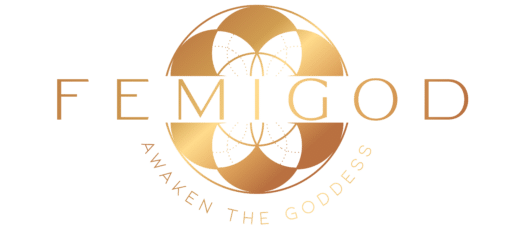




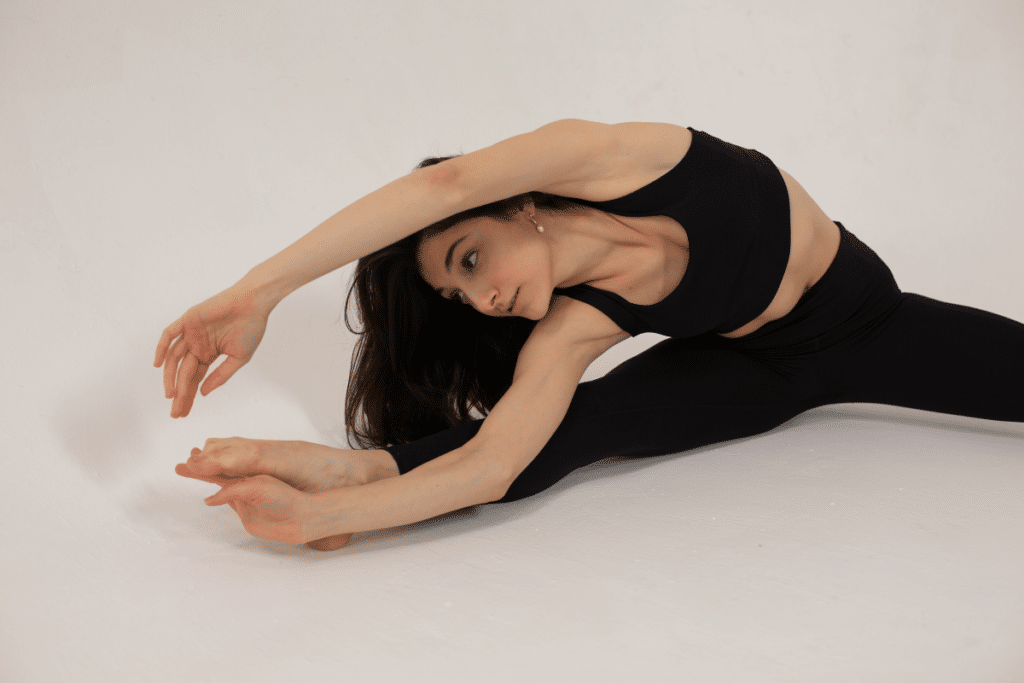

[…] Read More: Yin Yoga: 7 Awesome Benefits for Body and Mind […]
[…] Natalie Heath December 9, 2022 0 Comments […]